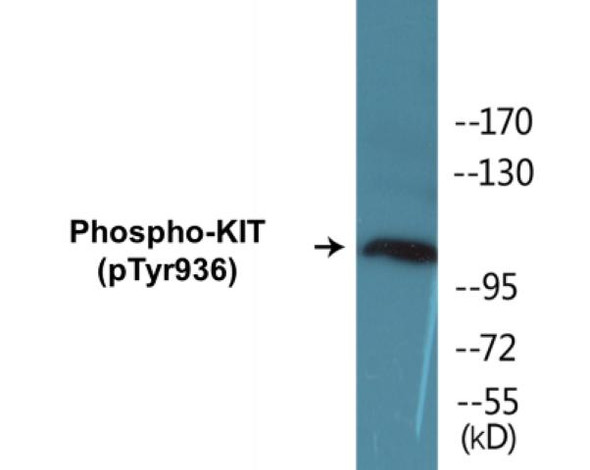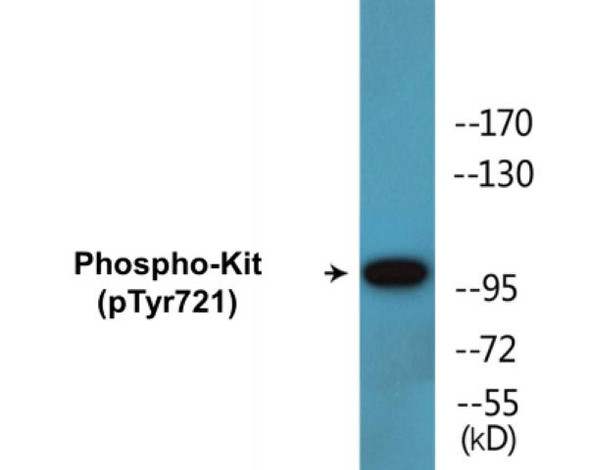Description
NMDAR1 (Phospho-Ser897)Colorimetric Cell-Based ELISA Kit
The NMDAR1 Phospho-Ser897 Colorimetric Cell-Based ELISA Kit is a cutting-edge tool designed for the sensitive and specific detection of phosphorylated NMDAR1 at serine 897 in cell lysates and tissue samples. This kit offers high accuracy and reproducibility, making it the perfect choice for researchers looking to study the role of NMDAR1 phosphorylation in various cellular processes.NMDAR1 is a key subunit of the NMDA receptor, a critical player in synaptic plasticity, learning, and memory. Phosphorylation of NMDAR1 at serine 897 has been linked to conditions such as Alzheimer's disease, stroke, and psychiatric disorders, highlighting its importance as a potential therapeutic target.
With the NMDAR1 Phospho-Ser897 Colorimetric Cell-Based ELISA Kit, researchers can gain valuable insights into the signaling pathways involved in NMDAR1 phosphorylation and its implications for various neurological and psychiatric disorders. This kit is a valuable tool for advancing research in the field of neuroscience and drug discovery.
| Product Name: | NMDAR1 (Phospho-Ser897)Colorimetric Cell-Based ELISA Kit |
| Product Code: | CBCAB01582 |
| ELISA Type: | Cell-Based |
| Target: | NMDAR1 (Phospho-Ser897) |
| Reactivity: | Human, Mouse, Rat |
| Dynamic Range: | > 5000 Cells |
| Detection Method: | Colorimetric 450 nm |
| Format: | 2 x 96-Well Microplates |
The NMDAR1 (Phospho-Ser897) Colorimetric Cell-Based ELISA Kit is a convenient, lysate-free, high throughput and sensitive assay kit that can detect NMDAR1 protein phosphorylation and expression profile in cells. The kit can be used for measuring the relative amounts of phosphorylated NMDAR1 in cultured cells as well as screening for the effects that various treatments, inhibitors (ie. siRNA or chemicals), or activators have on NMDAR1 phosphorylation.
Qualitative determination of NMDAR1 (Phospho-Ser897) concentration is achieved by an indirect ELISA format. In essence, NMDAR1 (Phospho-Ser897) is captured by NMDAR1 (Phospho-Ser897)-specific primary (1ø) antibodies while the HRP-conjugated secondary (2ø) antibodies bind the Fc region of the 1ø antibody. Through this binding, the HRP enzyme conjugated to the 2ø antibody can catalyze a colorimetric reaction upon substrate addition. Due to the qualitative nature of the Cell-Based ELISA, multiple normalization methods are needed:
| 1. | A monoclonal antibody specific for human GAPDH is included to serve as an internal positive control in normalizing the target absorbance values. |
| 2. | Following the colorimetric measurement of HRP activity via substrate addition, the Crystal Violet whole-cell staining method may be used to determine cell density. After staining, the results can be analysed by normalizing the absorbance values to cell amounts, by which the plating difference can be adjusted. |
| Database Information: | Gene ID: 2902, UniProt ID: Q05586, OMIM: 138249, Unigene: Hs.558334 |
| Gene Symbol: | GRIN1 |
| Sub Type: | Phospho |
| UniProt Protein Function: | NMDAR1: a subunit of N-methyl-D-aspartate (NMDA) receptors, members of the glutamate receptor channel superfamily. Possesses high calcium permeability and voltage-dependent sensitivity to magnesium and is modulated by glycine. Plays a key role in synaptic plasticity, synaptogenesis, excitotoxicity, memory acquisition and learning. Mediates neuronal functions in glutamate neurotransmission. Three alternatively-spliced isoforms have been described. |
| UniProt Protein Details: | Protein type:Channel, ligand-gated; Membrane protein, multi-pass; Membrane protein, integral; Channel, calcium Chromosomal Location of Human Ortholog: 9q34.3 Cellular Component: neuron projection; cell surface; endoplasmic reticulum; integral to plasma membrane; postsynaptic density; dendrite; dendritic spine; terminal button; excitatory synapse; N-methyl-D-aspartate selective glutamate receptor complex; postsynaptic membrane; synaptic vesicle; plasma membrane; synapse; cell junction Molecular Function:voltage-gated cation channel activity; neurotransmitter binding; glutamate receptor binding; calcium channel activity; calcium ion binding; calmodulin binding; protein binding; enzyme binding; glutamate binding; extracellular-glutamate-gated ion channel activity; protein heterodimerization activity; N-methyl-D-aspartate selective glutamate receptor activity; glycine binding Biological Process: regulation of long-term neuronal synaptic plasticity; axon guidance; male mating behavior; prepulse inhibition; adult locomotory behavior; positive regulation of apoptosis; regulation of dendrite morphogenesis; rhythmic process; response to morphine; sensory perception of pain; regulation of axonogenesis; calcium ion homeostasis; synaptic transmission; regulation of respiratory gaseous exchange; conditioned taste aversion; ephrin receptor signaling pathway; visual learning; negative regulation of neuron apoptosis; protein tetramerization; cation transport; synaptic transmission, glutamatergic; response to amphetamine; social behavior; respiratory gaseous exchange; pons maturation; cellular calcium ion homeostasis; regulation of membrane potential; response to ethanol; regulation of synaptogenesis; olfactory learning; long-term memory; suckling behavior; propylene metabolic process; ionotropic glutamate receptor signaling pathway; positive regulation of transcription from RNA polymerase II promoter; cerebral cortex development; regulation of excitatory postsynaptic membrane potential; response to calcium ion Disease: Mental Retardation, Autosomal Dominant 8 |
| NCBI Summary: | The protein encoded by this gene is a critical subunit of N-methyl-D-aspartate receptors, members of the glutamate receptor channel superfamily which are heteromeric protein complexes with multiple subunits arranged to form a ligand-gated ion channel. These subunits play a key role in the plasticity of synapses, which is believed to underlie memory and learning. Cell-specific factors are thought to control expression of different isoforms, possibly contributing to the functional diversity of the subunits. Alternatively spliced transcript variants have been described. [provided by RefSeq, Jul 2008] |
| UniProt Code: | Q05586 |
| NCBI GenInfo Identifier: | 548377 |
| NCBI Gene ID: | 2902 |
| NCBI Accession: | Q05586.1 |
| UniProt Secondary Accession: | Q05586,P35437, Q12867, Q12868, Q5VSF3, Q5VSF4, Q5VSF5 Q5VSF6, Q5VSF7, A6NLK7, A6NLR1, C9K0X1, |
| UniProt Related Accession: | Q05586 |
| Molecular Weight: | 101,851 Da |
| NCBI Full Name: | Glutamate receptor ionotropic, NMDA 1 |
| NCBI Synonym Full Names: | glutamate receptor, ionotropic, N-methyl D-aspartate 1 |
| NCBI Official Symbol: | GRIN1 |
| NCBI Official Synonym Symbols: | NR1; MRD8; GluN1; NMDA1; NMDAR1 |
| NCBI Protein Information: | glutamate receptor ionotropic, NMDA 1; NMD-R1; glutamate [NMDA] receptor subunit zeta 1; glutamate [NMDA] receptor subunit zeta-1; N-methyl-D-aspartate receptor subunit NR1; N-methyl-D-aspartate receptor channel, subunit zeta-1 |
| UniProt Protein Name: | Glutamate receptor ionotropic, NMDA 1 |
| UniProt Synonym Protein Names: | Glutamate [NMDA] receptor subunit zeta-1; N-methyl-D-aspartate receptor subunit NR1; NMD-R1 |
| Protein Family: | Glutamate receptor ionotropic |
| UniProt Gene Name: | GRIN1 |
| UniProt Entry Name: | NMDZ1_HUMAN |
| Component | Quantity |
| 96-Well Cell Culture Clear-Bottom Microplate | 2 plates |
| 10X TBS | 24 mL |
| Quenching Buffer | 24 mL |
| Blocking Buffer | 50 mL |
| 15X Wash Buffer | 50 mL |
| Primary Antibody Diluent | 12 mL |
| 100x Anti-Phospho Target Antibody | 60 µL |
| 100x Anti-Target Antibody | 60 µL |
| Anti-GAPDH Antibody | 60 µL |
| HRP-Conjugated Anti-Rabbit IgG Antibody | 12 mL |
| HRP-Conjugated Anti-Mouse IgG Antibody | 12 mL |
| SDS Solution | 12 mL |
| Stop Solution | 24 mL |
| Ready-to-Use Substrate | 12 mL |
| Crystal Violet Solution | 12 mL |
| Adhesive Plate Seals | 2 seals |
The following materials and/or equipment are NOT provided in this kit but are necessary to successfully conduct the experiment:
- Microplate reader able to measure absorbance at 450 nm and/or 595 nm for Crystal Violet Cell Staining (Optional)
- Micropipettes with capability of measuring volumes ranging from 1 µL to 1 ml
- 37% formaldehyde (Sigma Cat# F-8775) or formaldehyde from other sources
- Squirt bottle, manifold dispenser, multichannel pipette reservoir or automated microplate washer
- Graph paper or computer software capable of generating or displaying logarithmic functions
- Absorbent papers or vacuum aspirator
- Test tubes or microfuge tubes capable of storing ≥1 ml
- Poly-L-Lysine (Sigma Cat# P4832 for suspension cells)
- Orbital shaker (optional)
- Deionized or sterile water
*Note: Protocols are specific to each batch/lot. For the correct instructions please follow the protocol included in your kit.
| Step | Procedure |
| 1. | Seed 200 µL of 20,000 adherent cells in culture medium in each well of a 96-well plate. The plates included in the kit are sterile and treated for cell culture. For suspension cells and loosely attached cells, coat the plates with 100 µL of 10 µg/ml Poly-L-Lysine (not included) to each well of a 96-well plate for 30 minutes at 37 °C prior to adding cells. |
| 2. | Incubate the cells for overnight at 37 °C, 5% CO2. |
| 3. | Treat the cells as desired. |
| 4. | Remove the cell culture medium and rinse with 200 µL of 1x TBS, twice. |
| 5. | Fix the cells by incubating with 100 µL of Fixing Solution for 20 minutes at room temperature. The 4% formaldehyde is used for adherent cells and 8% formaldehyde is used for suspension cells and loosely attached cells. |
| 6. | Remove the Fixing Solution and wash the plate 3 times with 200 µL 1x Wash Buffer for five minutes each time with gentle shaking on the orbital shaker. The plate can be stored at 4 °C for a week. |
| 7. | Add 100 µL of Quenching Buffer and incubate for 20 minutes at room temperature. |
| 8. | Wash the plate 3 times with 1x Wash Buffer for 5 minutes each time. |
| 9. | Add 200 µL of Blocking Buffer and incubate for 1 hour at room temperature. |
| 10. | Wash 3 times with 200 µL of 1x Wash Buffer for 5 minutes each time. |
| 11. | Add 50 µL of 1x primary antibodies Anti-NMDAR1 (Phospho-Ser897) Antibody, Anti-NMDAR1 Antibody and/or Anti-GAPDH Antibody) to the corresponding wells, cover with Parafilm and incubate for 16 hours (overnight) at 4 °C. If the target expression is known to be high, incubate for 2 hours at room temperature. |
| 12. | Wash 3 times with 200 µL of 1x Wash Buffer for 5 minutes each time. |
| 13. | Add 50 µL of 1x secondary antibodies (HRP-Conjugated AntiRabbit IgG Antibody or HRP-Conjugated Anti-Mouse IgG Antibody) to corresponding wells and incubate for 1.5 hours at room temperature. |
| 14. | Wash 3 times with 200 µL of 1x Wash Buffer for 5 minutes each time. |
| 15. | Add 50 µL of Ready-to-Use Substrate to each well and incubate for 30 minutes at room temperature in the dark. |
| 16. | Add 50 µL of Stop Solution to each well and read OD at 450 nm immediately using the microplate reader. |
(Additional Crystal Violet staining may be performed if desired – details of this may be found in the kit technical manual.)






